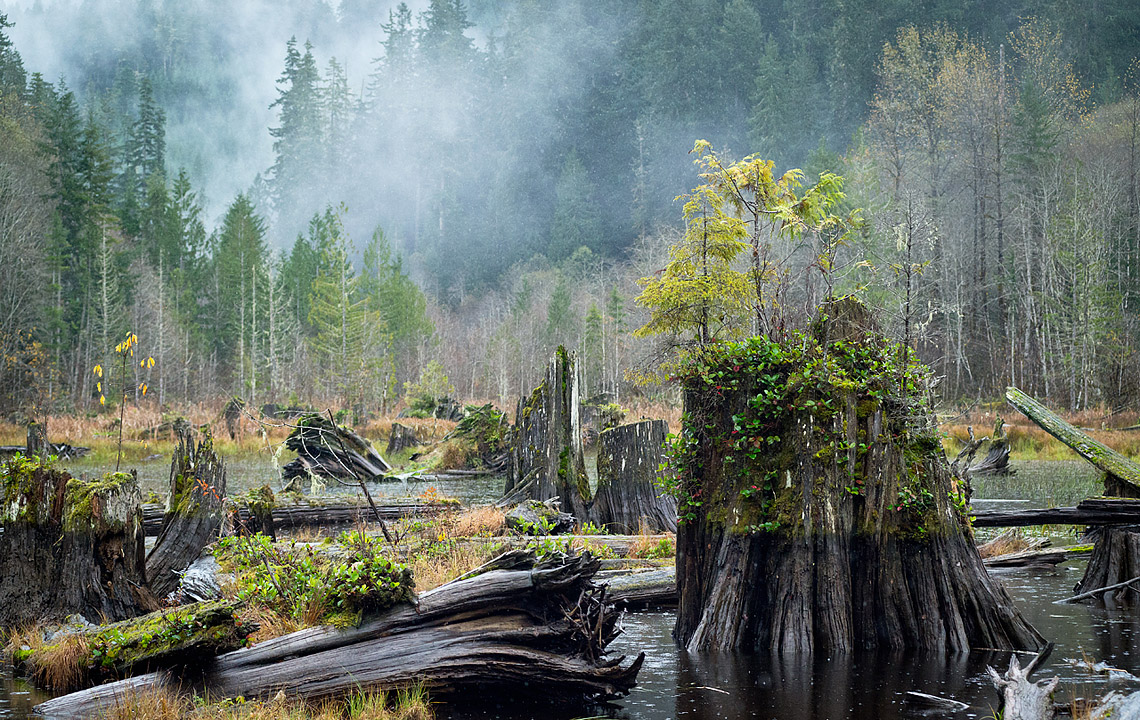
Marsh Pond is a large surface water wetland on the Swamp Creek tributary to the Suiattle River, which enters on the left bank at approximately Rive Mile 17. This project will provide passage to 13 acres of existing winter rearing habitat and 0.7 miles of tributary habitat. Winter rearing habitat has been identified as an important limiting factor for coho salmon and to a smaller extent Chinook salmon (Beechie et al 1994, SRSC and WDFW 2005).
In the early 1990s, the United States Forest Service (USFS) constructed a berm to increase the size of this natural wetland and the Washington Department of Fish and Wildlife subsequently installed a fishway at the outlet of Marsh Pond to provide fish passage over the berm. Historically this stream and wetland were very productive for coho salmon and cutthroat trout by providing over-wintering habitat. After the berm and fishway were installed, the wetland continued to be highly productive for a short time. However problems with sedimentation and beaver activity eventually reduced the effectiveness of the fishway and fish passage to the wetland was entirely eliminated, as observed in monitoring smolt outmigration.
The purpose of this project was to remove the defunct fishway and restore fish passage into and out of Marsh Pond, while retaining a large pond area and minimizing or removing maintenance requirements. This was accomplished by lowering the berm and regrading the floodplain and outlet area. Other project elements also included decommissioning Forest Road 2540, removing two culverts over the Marsh Pond outlet channel and restoring the natural channel, decommissioning a sediment detention pond constructed in the early 1990s on the alluvial fan of Swamp Creek, and installing native vegetation throughout the site.
Project Status/Timeline
This project was constructed in 2014, with a small construction adjustment made in 2015. The site was planted in native vegetation in 2014 and monitoring is ongoing.
Primary Project Contact
Nora Kammer –Restoration Ecologist
Funding Sources
USFS – United States Forest Service
Project Partners
USFS – United States Forest Service

